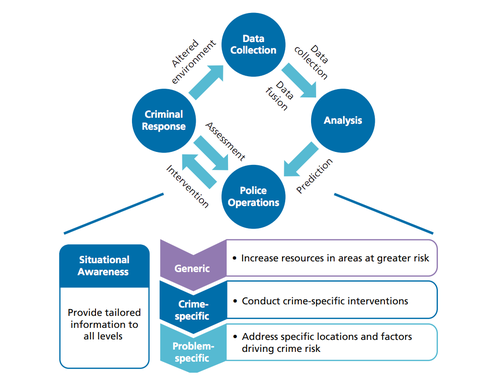Centre for Data Ethics and Innovation: “Data sharing is fundamental to effective government and the running of public services. But it is not an end in itself. Data needs to be shared to drive improvements in service delivery and benefit citizens. For this to happen sustainably and effectively, public trust in the way data is shared and used is vital. Without such trust, the government and wider public sector risks losing society’s consent, setting back innovation as well as the smooth running of public services. Maximising the benefits of data driven technology therefore requires a solid foundation of societal approval.
AI and data driven technology offer extraordinary potential to improve decision making and service delivery in the public sector – from improved diagnostics to more efficient infrastructure and personalised public services. This makes effective use of data more important than it has ever been, and requires a step-change in the way data is shared and used. Yet sharing more data also poses risks and challenges to current governance arrangements.
The only way to build trust sustainably is to operate in a trustworthy way. Without adequate safeguards the collection and use of personal data risks changing power relationships between the citizen and the state. Insights derived by big data and the matching of different data sets can also undermine individual privacy or personal autonomy. Trade-offs are required which reflect democratic values, wider public acceptability and a shared vision of a data driven society. CDEI has a key role to play in exploring this challenge and setting out how it can be addressed. This report identifies barriers to data sharing, but focuses on building and sustaining the public trust which is vital if society is to maximise the benefits of data driven technology.
There are many areas where the sharing of anonymised and identifiable personal data by the public sector already improves services, prevents harm, and benefits the public. Over the last 20 years, different governments have adopted various measures to increase data sharing, including creating new legal sharing gateways. However, despite efforts to increase the amount of data sharing across the government, and significant successes in areas like open data, data sharing continues to be challenging and resource-intensive. This report identifies a range of technical, legal and cultural barriers that can inhibit data sharing.
Barriers to data sharing in the public sector
Technical barriers include limited adoption of common data standards and inconsistent security requirements across the public sector. Such inconsistency can prevent data sharing, or increase the cost and time for organisations to finalise data sharing agreements.
While there are often pre-existing legal gateways for data sharing, underpinned by data protection legislation, there is still a large amount of legal confusion on the part of public sector bodies wishing to share data which can cause them to start from scratch when determining legality and commit significant resources to legal advice. It is not unusual for the development of data sharing agreements to delay the projects for which the data is intended. While the legal scrutiny of data sharing arrangements is an important part of governance, improving the efficiency of these processes – without sacrificing their rigour – would allow data to be shared more quickly and at less expense.
Even when legal, the permissive nature of many legal gateways means significant cultural and organisational barriers to data sharing remain. Individual departments and agencies decide whether or not to share the data they hold and may be overly risk averse. Data sharing may not be prioritised by a department if it would require them to bear costs to deliver benefits that accrue elsewhere (i.e. to those gaining access to the data). Departments sharing data may need to invest significant resources to do so, as well as considering potential reputational or legal risks. This may hold up progress towards finding common agreement on data sharing. When there is an absence of incentives, even relatively small obstacles may mean data sharing is not deemed worthwhile by those who hold the data – despite the fact that other parts of the public sector might benefit significantly….(More)”.

